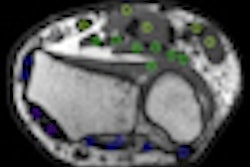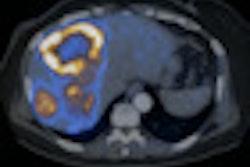Handheld devices such as the iPod Touch may be suitable to review medical images in emergency radiology consultations, according to research published in the February issue of the American Journal of Roentgenology.
An Irish-led research team compared a Dell Axim personal digital assistant (PDA) and an Apple iPod Touch to secondary-class liquid crystal displays (LCDs) in two common emergency radiology image types. They found that the display types yielded similar performance (AJR, February 2010, Vol. 194:2, pp. 469-474).
"The results suggest that the handheld devices investigated in this study may be comparable with secondary monitors for reporting findings on fresh intracranial bleeds on CT images and fractured wrists on radiographs and may be of value in radiology, particularly for teleconsultation and emergency procedures," wrote a research team led by Rachel Toomey of the University College Dublin School of Medicine and Medical Science in Dublin, Ireland.
The researchers wanted to determine if the diagnostic accuracy of radiologists using handheld computing devices was comparable to that of radiologists using secondary display monitors already in use for emergency consultation. They compared the two handheld devices with an 18.1-inch Viewsonic VG810B LCD monitor with a resolution of 1024 x 1280 pixels. Each device was tested against the secondary monitors with both posteroanterior wrist radiographs and brain CT slices.
Forty-nine radiologists participated in the PDA study, while 35 took part in the iPod Touch study. The readers reviewed a bank of 30 wrist or brain images and searched for abnormalities that consisted of either distal radial fractures or fresh intracranial bleeds. The researchers then compared their accuracy for the different technologies and clinical applications.
The study team found that there were no statistically significant differences in overall reader accuracy for either wrist radiographs or brain CT images regardless of whether they were viewed on the iPod Touch or the secondary monitor. As for the PDA, no significant differences in reader accuracy were found with the secondary-class monitor for viewing wrist radiographs.
For brain CT images on PDAs, the researchers found that some readers -- and the entire reading group when taken as a whole -- actually had higher performance scores when reviewing images on PDAs rather than on the secondary displays. This finding did not reach statistical significance when broken out for only neuroradiologists, however.
The authors acknowledged the need for further research, but said their results highlight the potential of handheld devices.
"If handheld devices can be found to be an efficient reporting tool, the value -- to both the clinician of not having to be on a specific site to provide an opinion and to the patient for whom the immediacy of reports is enhanced -- is clear," the authors said.
By Erik L. Ridley
AuntMinnie.com staff writer
January 21, 2010
Related Reading
CT scans sent to iPhone can make appendicitis diagnoses, December 2, 2009
Medical apps on iPhone demonstrate value, potential, November 30, 2009
Handheld devices show promise for patient education, June 8, 2009
Smartphone vs. PACS: Smartphone does just fine for skeletal trauma, December 4, 2008
PDAs may be suitable for viewing trauma head CT, January 25, 2008
Copyright © 2010 AuntMinnie.com



















